With modern optics and computerisation, today’s starter telescopes are a far cry from the scopes many of us began our astronomy adventures with.
Celestron’s 114LCM Computerised Telescope, for example, combines reasonable optics with a computerised mount to give beginners a tantalising taste of what there is to see in the cosmos.
The 114LCM consists of an optical tube with a 4.5-inch mirror and a focal length of 1,000mm giving a focal ratio of f/9. It has a basic rack and pinion focuser that takes 1.25-inch eyepieces: 25mm and 9mm eyepieces are provided giving magnifications of 40x and 111x.
A built-in StarPointer red dot finder helps to aim the telescope, especially during the alignment phase.
The tube is attached to the motorised base via a Vixen-style mounting bar that connects to the aluminium tripod using a bolt on the underside.
It’s quick and straightforward to assemble as there are just three main sections: tube, base and tripod.
The 114LCM comes with a NexStar hand controller that has a database of 4,000 objects from the main deep-sky databases (Messier, NGC and Caldwell).
Also included are the Solar System, variable stars and double stars.
Power is provided by eight AA batteries that sit in a built-in compartment.
Alternatively you can use a power tank providing 12V 750mA.
This telescope features in our lists of the best telescopes for beginners, best telescopes for astrophotography and best telescopes for kids
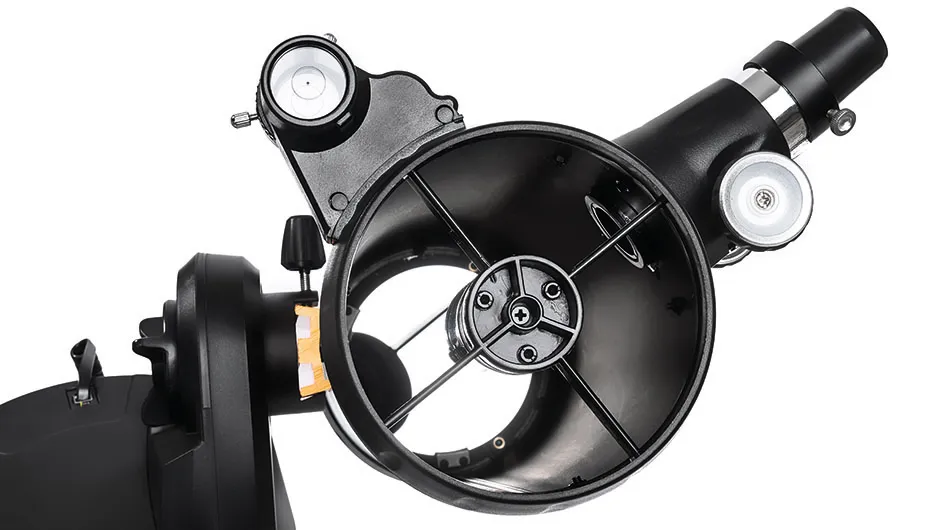
Ducks and dumbbells
The 114LCM has five alignment modes.
We tested them all and in each case achieved the best alignment and tracking using Celestron’s bespoke SkyAlign system.
Solar System Align is also useful for daytime alignment, especially if the Moon is up.
Using the 25mm eyepiece we checked the quality of the field of view by targeting Altair (Alpha (α) Aquilae).
The star was pin sharp across 75 per cent of the view with a little coma towards the field edge.
The view through the 25mm eyepiece is big enough to fit in all of the Moon and more – we estimate it has a field of view of just over 1.25°.
Using the Sky Tour option we explored a wide range of targets.
M11, the Wild Duck Cluster, was a hazy patch with a bright star and a smattering of almost-resolved stars around it, especially when we swapped to the 9mm eyepiece for more magnification.
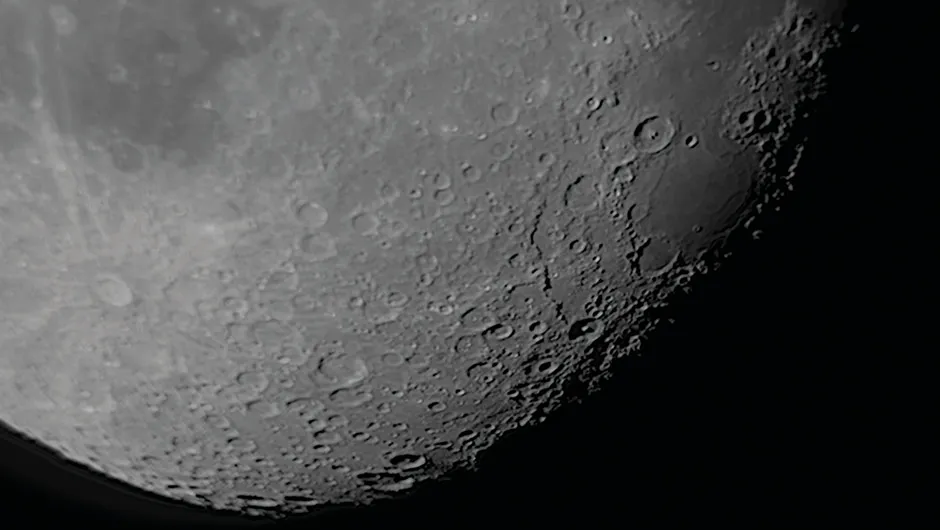
The Dumbbell Nebula, M27 – a planetary nebula – was quite bright and mottled while M57, the Ring Nebula, was a ghostly hoop of smoke hanging in space.
Albireo (Beta (β) Cygni), the late-summer/early-autumn showstopper, is a double star and with the 114LCM its gold and sky-blue components were clearly separated and very colourful.
Andromeda was rising in the east during the test period so we took in M31, the Andromeda Galaxy.
It’s a large object so with the 25mm eyepiece we could see the inner core and just get its companion, M32, in the view by slightly offsetting from the centre.
The fainter satellite galaxy, M110, was not easy but could be spotted with averted vison.
M45, the Pleiades star cluster, filled the view of the 25mm eyepiece with stars while the Orion Nebula, M42/43, was awash with nebulosity.
Although it’s not designed as an imaging system, we used the 114LCM with our webcam to see what results were possible.
Deep-sky imaging is not possible but we did capture a shot of Saturn and its rings, as well as producing an eight-pane mosaic of the Moon, which was very satisfying.
We also captured a poor image of the Moon using an iPhone.
The low quality was partly down to a damaged adaptor, but it shows there’s potential with this set-up.
The view while focusing can be a little shaky, but you can lessen the effect by making small adjustments to the focuser.
There’s no denying this telescope has a plasticky feel but this helps keep its cost down.
My own astronomy adventure began with a 60mm refractor but I wish this scope had been available back then, as it whets the appetite, and that’s what a beginner’s telescope is all about.
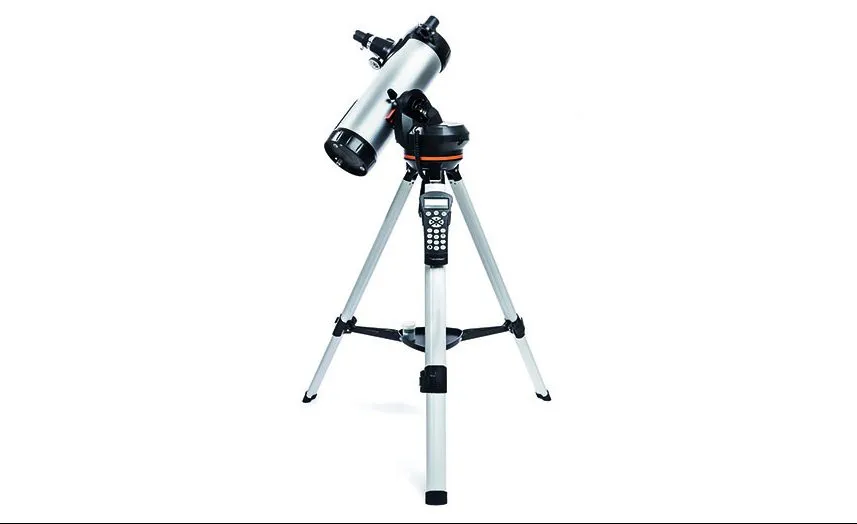
Height and weight
The first thing you’ll notice about the LCM114 is how light the complete package of telescope, motorised base and tripod is.
Weighing a total of just 5kg, it’s ideal for young beginners to assemble and set up (with guidance from an adult).
The height is also convenient for youngsters – with the optical tube aligned horizontally, the eyepiece sits 83cm high when the tripod legs are at their shortest and only 122cm high at their longest.
With the telescope aligned vertically, the eyepiece is just 4cm higher at both points so even objects at the enith are easily accessible.
The fully extended height puts the eyepiece in a comfortable position for adults.
The tube on its own is only 2kg – two bags of sugar – making it easy to lift onto the motorised base.
We could lift the whole fully assembled system up and quickly take it outside for a quick look at the stars, which makes this a good grab-and-go computerised system that can be run on batteries.
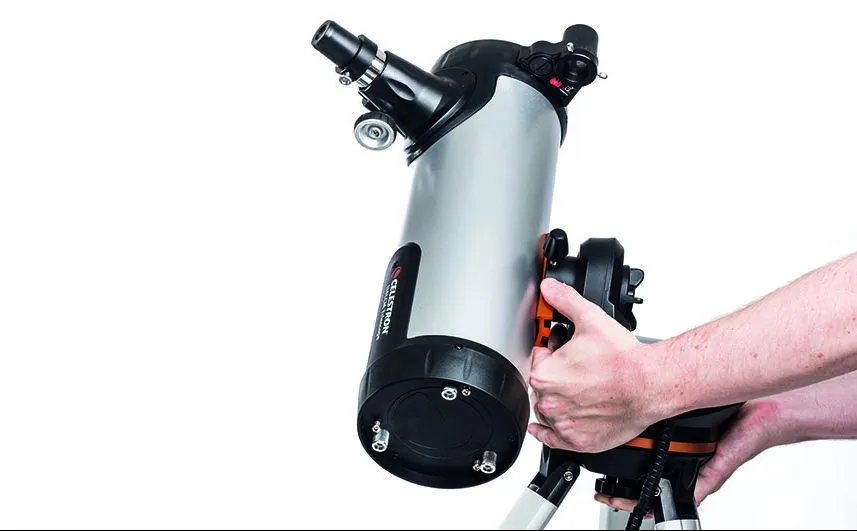
Optics
The LCM114 has a 4.5-inch primary mirror with a focal length of 1,000mm, which gives you a focal ratio of f/9.For its size, it offers good views with pin-sharp stars across almost three quarters of the field of vision in the supplied 25mm eyepiece.
Focuser and finder
The basic focuser uses a rack and pinion design and accepts 1.25-inch eyepieces.It was a little loose initially, but tightening the two screws underneath removed any play.The StarPointer is a red dot finder built into the system.It gives zero magnification but helps you focus in on your target.
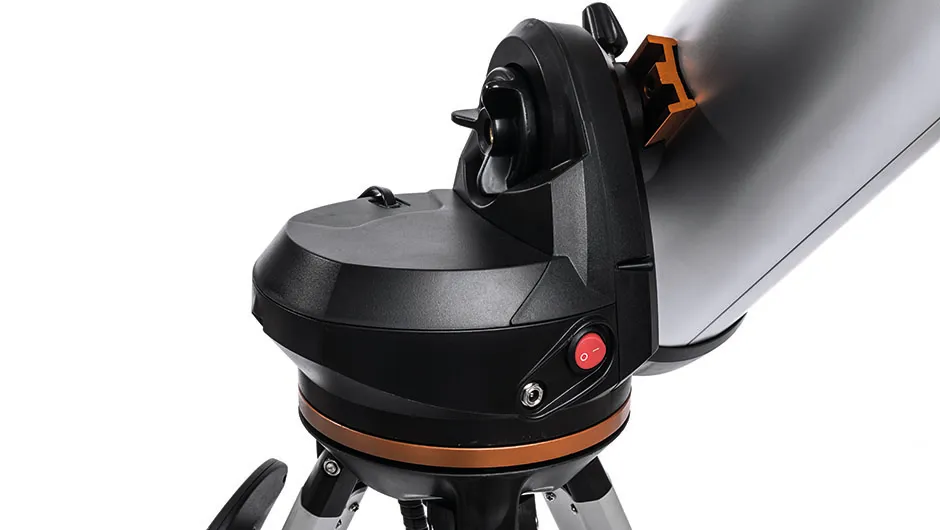
Motorised base
The mount holds the electronics and gears for altaz operation and houses a battery compartment for eight AA batteries, a 12V power socket and a clutch for the altitude adjustment/tensioning.The mounting clamp allows the optical tube to be attached via the Vixen-style dovetail bar, holding it securely in place.
Tripod and accessories tray
The telescope stands on three lightweight aluminium telescopic legs that can be clamped using the integral locks to raise/lower the assembly.The accessories tray locks the legs in place and provides somewhere to place the eyepieces during use.The tripod was reasonably stable, although breezes did shake the view a little.
Hand controller
The NexStar+ LCM hand controller lets you control, align and operate the telescope.It has a database of 4,000 targets including Solar System, Messier, NGC and Caldwell objects, along with double stars, variable stars and more.It has lots of utilities to get the most out of the system.
Vital stats
- Price £349.00
- Focal length 1000mm (f/9)
- Weight 5kg (OTA 2kg)
- Supplier David Hinds
- Telephone01525 852696
- www.celestron.co.uk
This review originally appeared in the December 2018 issue of BBC Sky at Night Magazine
